
10.02 - 24.04.2021
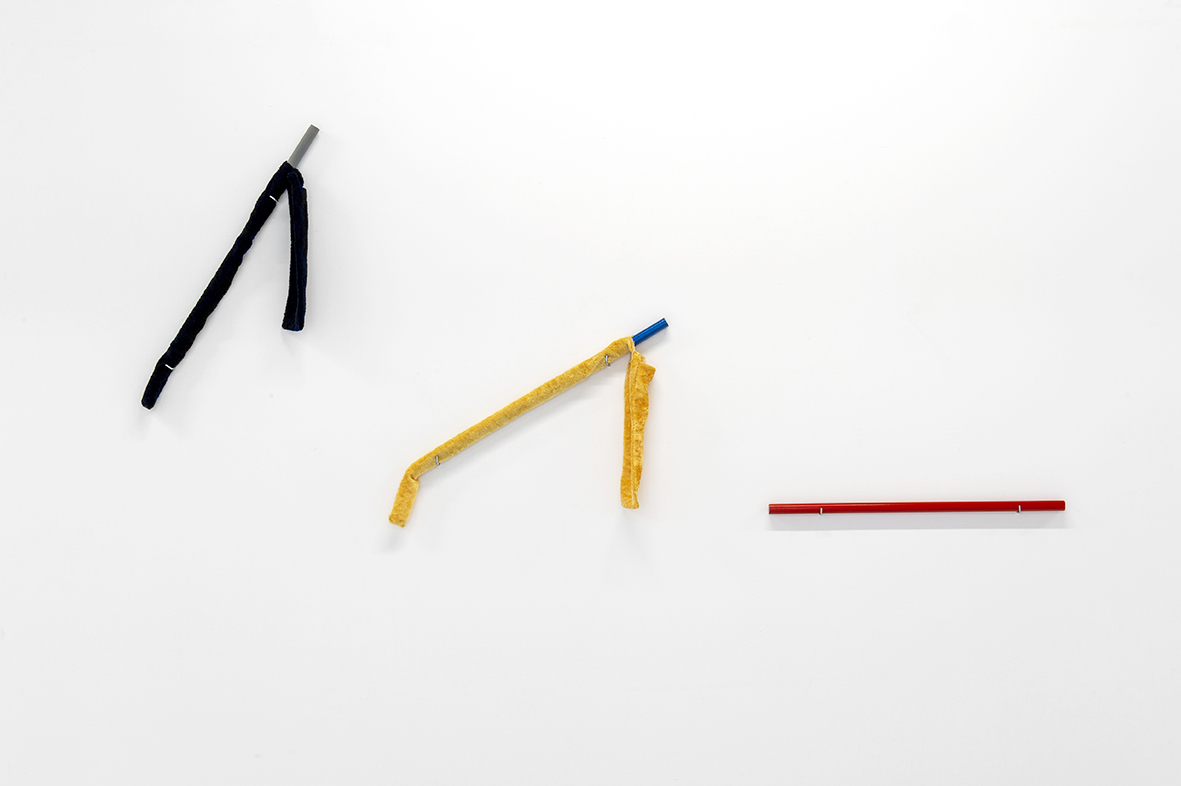
Jef Geys, Stabas, 1966. Plastic and fabric. © All rights reserved. Courtesy Air de Paris, Romainville.
Air de Paris est heureuse de présenter l’exposition personnelle de Jef Geys.
Jusqu’à quel point le savoir collectif peut-il être porté et documenté par une seule personne ? Jef Geys (1934-2018) est toujours présent, proche dans ses oeuvres. Quand bien même il peut en fait aussi être absent, anonyme, in-formé au sein d’une forme. Imaginez une exposition avec une centaine de peintures modèles vues comme identiques. Pensez aux questions du support et de la signature. Et qu’en est-il du cadre et de l’auteur ? Jef Geys porte un pull tricoté et avec un paysage en plastron. Une photographie le montre dans son jardin, les arbres en arrière-plan, une maison au centre du paysage brodé, le pull, l’artiste et le jardin transformé en support. Un écho du pull se retrouve dans les quatre « canevas » de paysages idylliques présentés pour la première fois dans cette exposition.
« Avez-vous déjà un stabas ? » C’est la une du journal local de mars 1970. Une nouvelle mode se répand et peut-être repérée dans la rue. « Certains ont une vision totalement différente de la vie depuis qu’ils marchent avec leur stabas ». C’est un mot pompeux, délibérément. Il signifie bâton et peut-être décrit comme un bâton de bois rond, toujours de même longueur et épaisseur. Il est soigneusement laqué à l’extérieur et dur au cœur. Certaines personnes portent leur stabas caché dans une gaine pelucheuse. Son origine est inconnue, d’aucuns rapportent les stabas à une tradition subversive mexicaine, d’autres font référence aux méthodes de camouflage de Geys. C’est un petit étui luxueux en apparence, mais il est très présent et il conquerra le monde.
« Een dag, een nacht, een dag ... » (Day and Night and Day…) est une vidéo-projection de 36 heures qui compile des milliers de photographies de l’archive de Jef Geys, dans un ordre aléatoire. Le film a été réalisé en 2002 pour la Documenta 11 de Okwui Enwezor à Kassel et a été décrit comme « le film ultime » ou un « anti-film ». C’est un inventaire quasiment infini de la vie quotidienne de l’artiste, une collection de photographies de sujets et d’objets qui suit la publication de 1998 « Al de zwart-wit foto’s tot 1998 » (All the Black-and-White Photographs until 1998), un épais ouvrage qui rassemble environ quarante mille planches-contact.
Entre la maison et le journal de la maison (Kempens Infortmatieblad, le Journal de la Campine), les reliefs végétaux en fibre de verre lacquée, les photographies noir et blanc donnent une existence organisée à l’approche de Geys, constituée de diverses méthodologies sociales, politiques et collectives. Son héritage subvertit encore le jardin de l’art et le nourrit en même temps.
Phillip Van den Bossche

Jef Geys, Landscape Sweater, 1967. Sweater with needlepoint canvas. © All rights reserverd. Courtesy Air de Paris, Romainville.
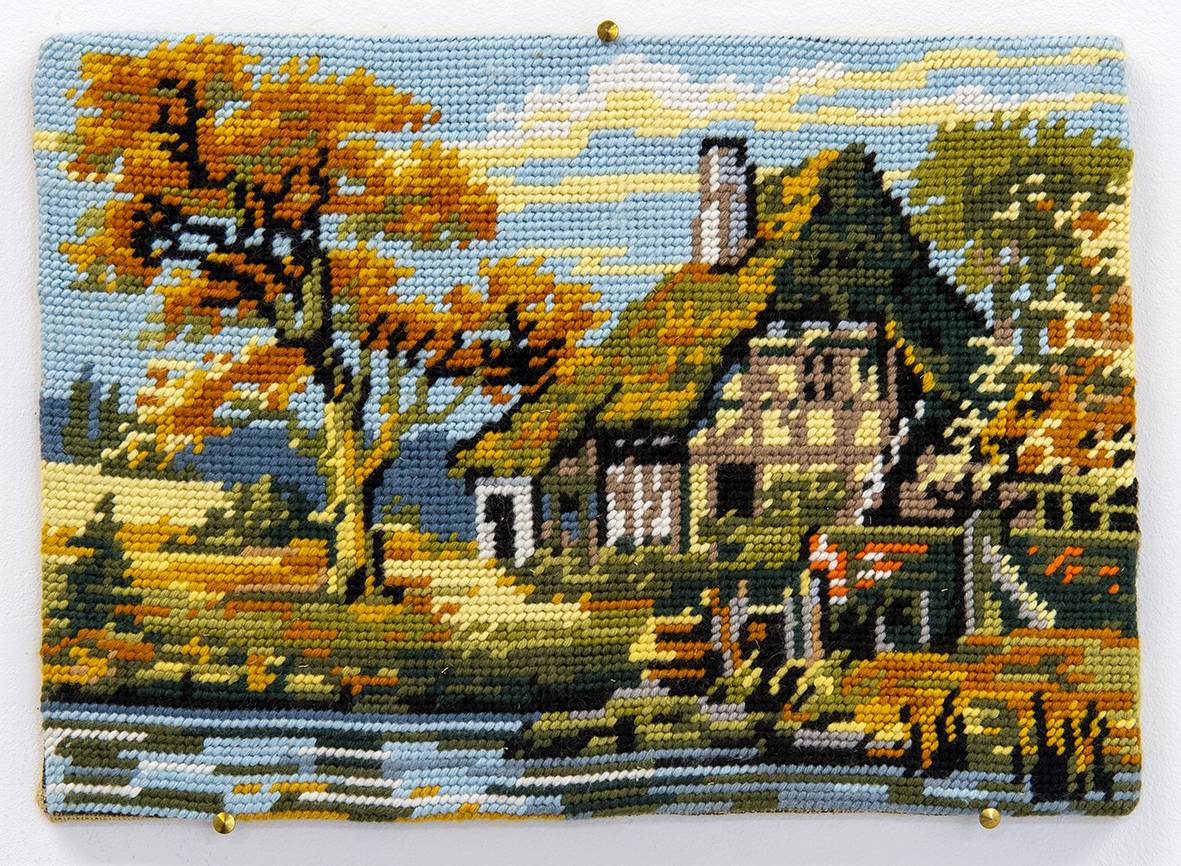
Jef Geys, Canvas Painting (Fall), 1985. Needlepoint canvas mounted on hardboard. Unique. © All rights reserverd. Courtesy Air de Paris, Romainville.
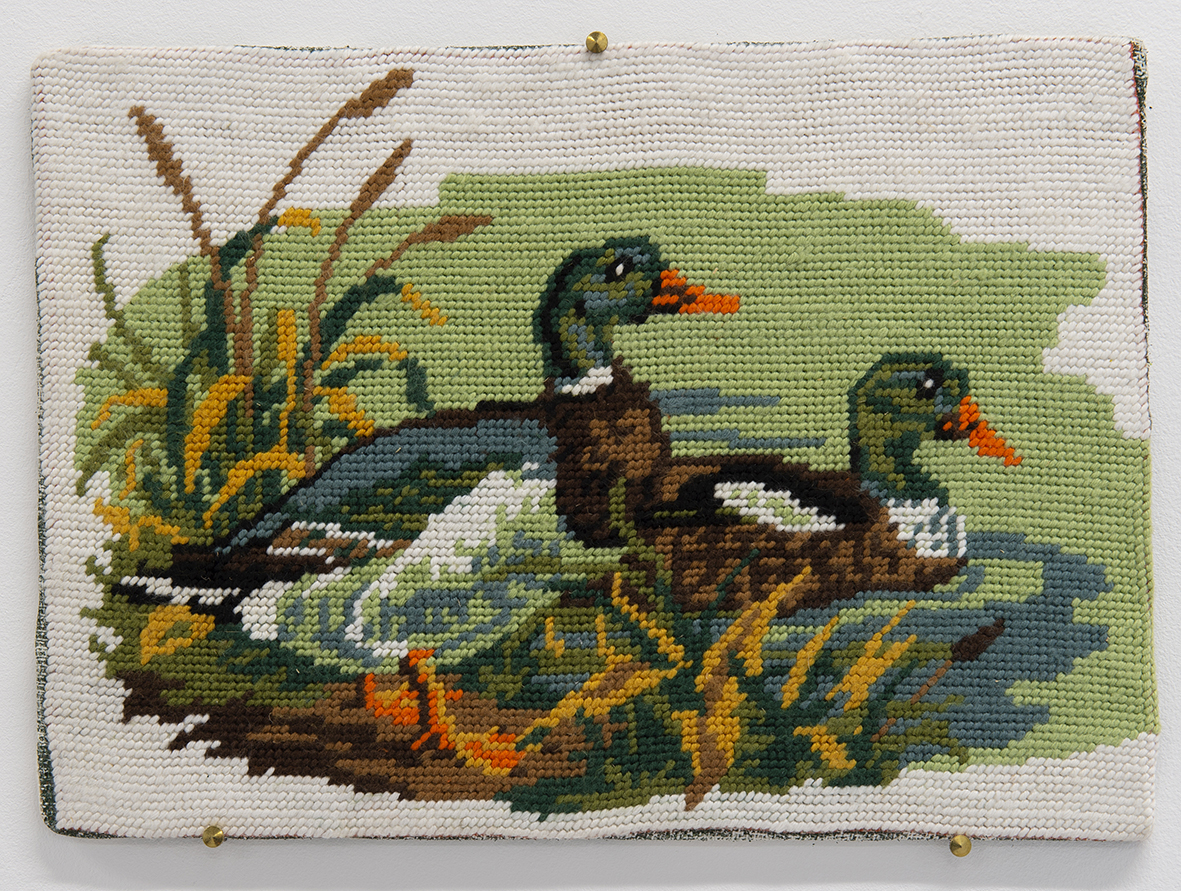
Jef Geys, Canvas Painting (Ducks), 1985. Needlepoint canvas mounted on hardboard. Unique. © All rights reserverd. Courtesy Air de Paris, Romainville
Air de Paris is pleased to present a solo exhibition of Jef Geys.
How much collective knowledge can be documented and be carried by one person? Jef Geys (B, 1934-2018) is always present and nearby in his artworks. Although he might also be absent, anonymous, unformed within a form as a matter of fact. Imagine an exhibition with one hundred,so-called identical model paintings. Think of the support question and the signature? And what about the frame and the author? JefGeys wears a knitted sweater with a framed landscape on it. The photograph was taken in his garden, trees in the background, a house centered on the knitted landscape, the sweater, the artist and the garden transformed into a support. An echo of the sweater can be found in the four ‘canevas’ idyllic landscapes, presented for the first time in this presentation.
“Do you already have a stabas?” It’s frontpage news in the local newspaper from March 1970. A new trend is spreading and can be spotted on the streets. “Some have gained a total other view on life since they are walking with their stabas.” It’s a deliberately pompous word. It means staff and can described as a round wooden stick, always of the same length and thickness. It’s softly lacquered on the outside, and hard within. Some people carry and hide their stabas in a plushy sheath. Its origin is unknown, some are relating the stabas to a Mexican subversive tradition, others refer to Geys’ camouflage methods. It’s apparently a luxurious little case, but a very present one and it will conquer the world.
“Een dag, een nacht, een dag, ...” (Day and Night and Day…) is a 36-hour-long video projection of a randomly ordered compilation of thousands of photographs from Jef Geys’ archive. It was realized in 2002 for Okwui Enwezor’s Documenta 11 in Kassel and has been variously described as the 'ultimate film' and an 'anti-film'. An almost endless inventory of the artists’ daily life, a photographed collection of both subject and object matter, “Een dag, een nacht, een dag, ...” follows Geys’ publication from 1998 “Al de zwart-wit foto’s tot 1998” (All the Black-and-White Photographs until 1998), a five-centimetre thick volume containing approximately 40,000 contact prints.
Jef Geys In-between the house and the house journal (Kempens Informatieblad), the auto lacquered fiberglass vegetable reliefs and the stabas, the black and white photographs give an organized existence to Geys’ approach, consisting of various social, political, personal and collective methodologies. His legacy is still subverting the art garden and feeding it at the same time.
Phillip Van den Bossche

Jef Geys, A Day, A Night, A Day... 2002. Video (all black and white pictures until 1998), QuickTime H 264, AAC, 36 hours looped. © All rights reserved. Courtesy Air de Paris, Romainville.
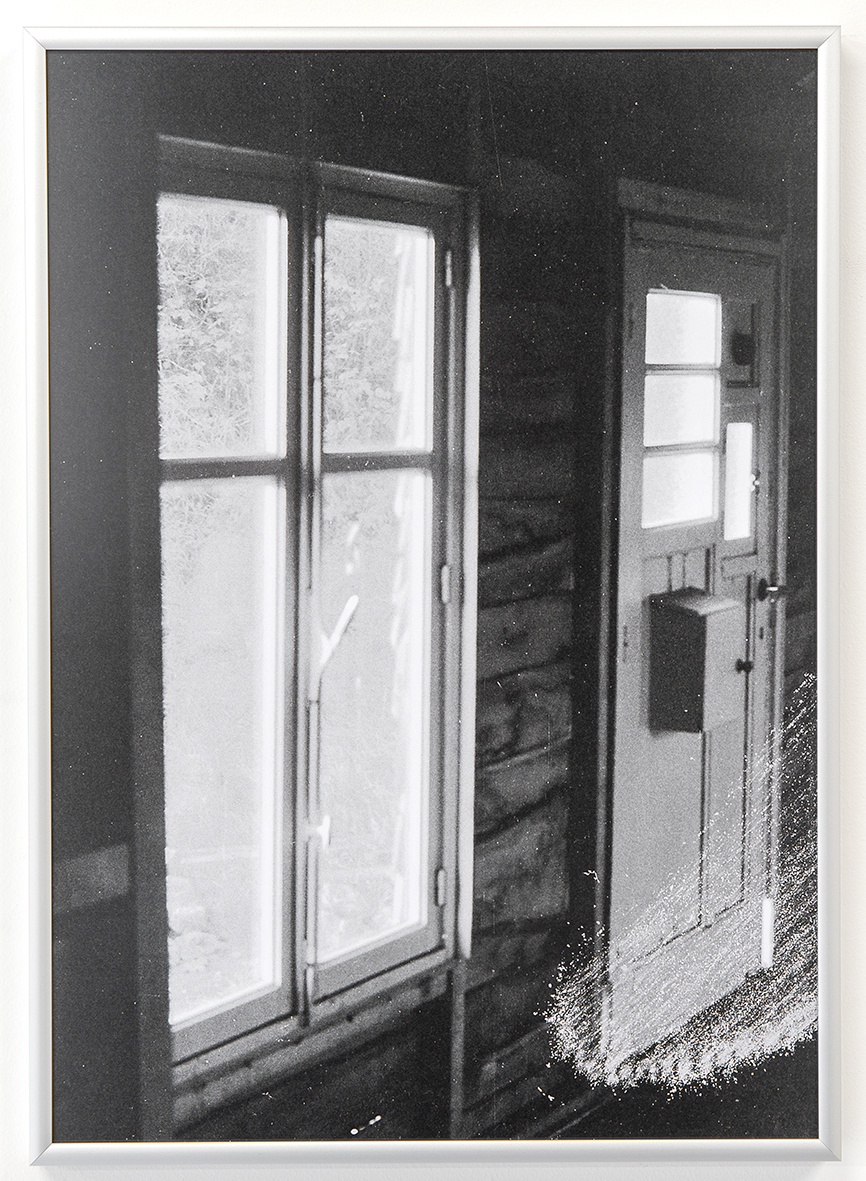
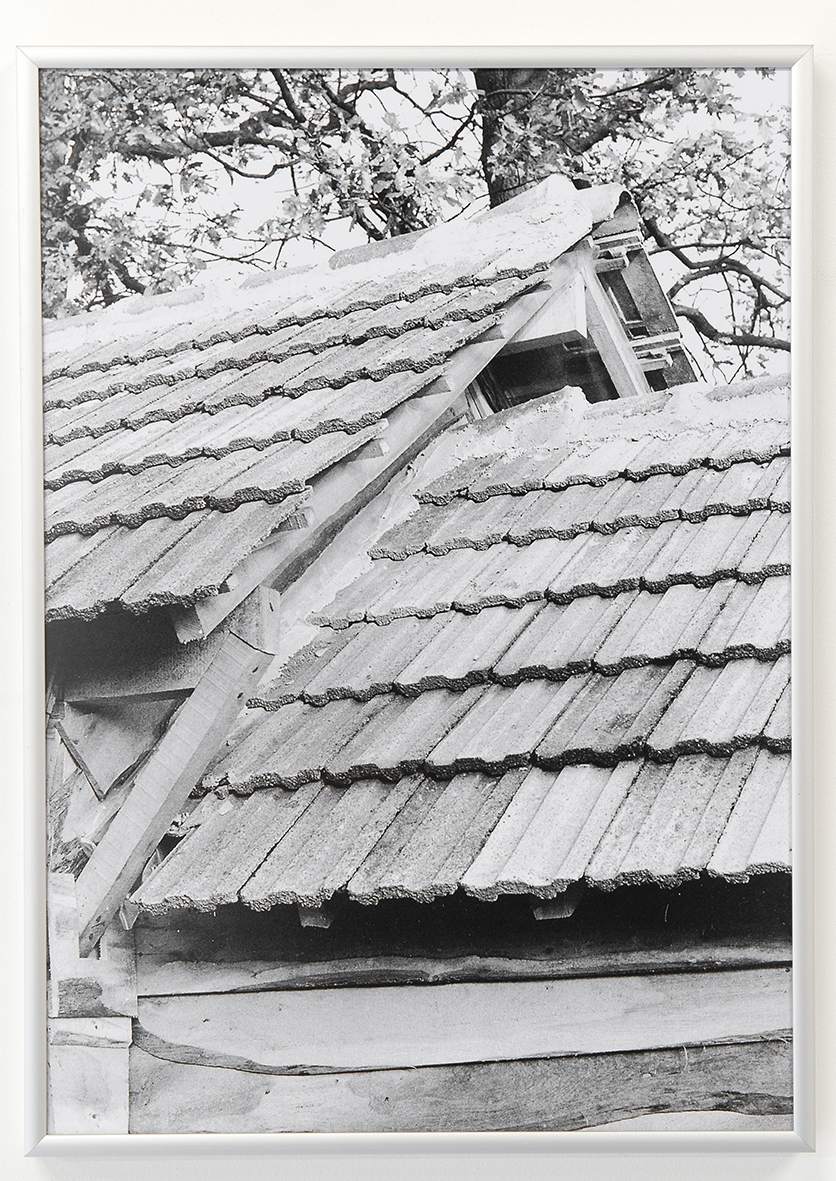
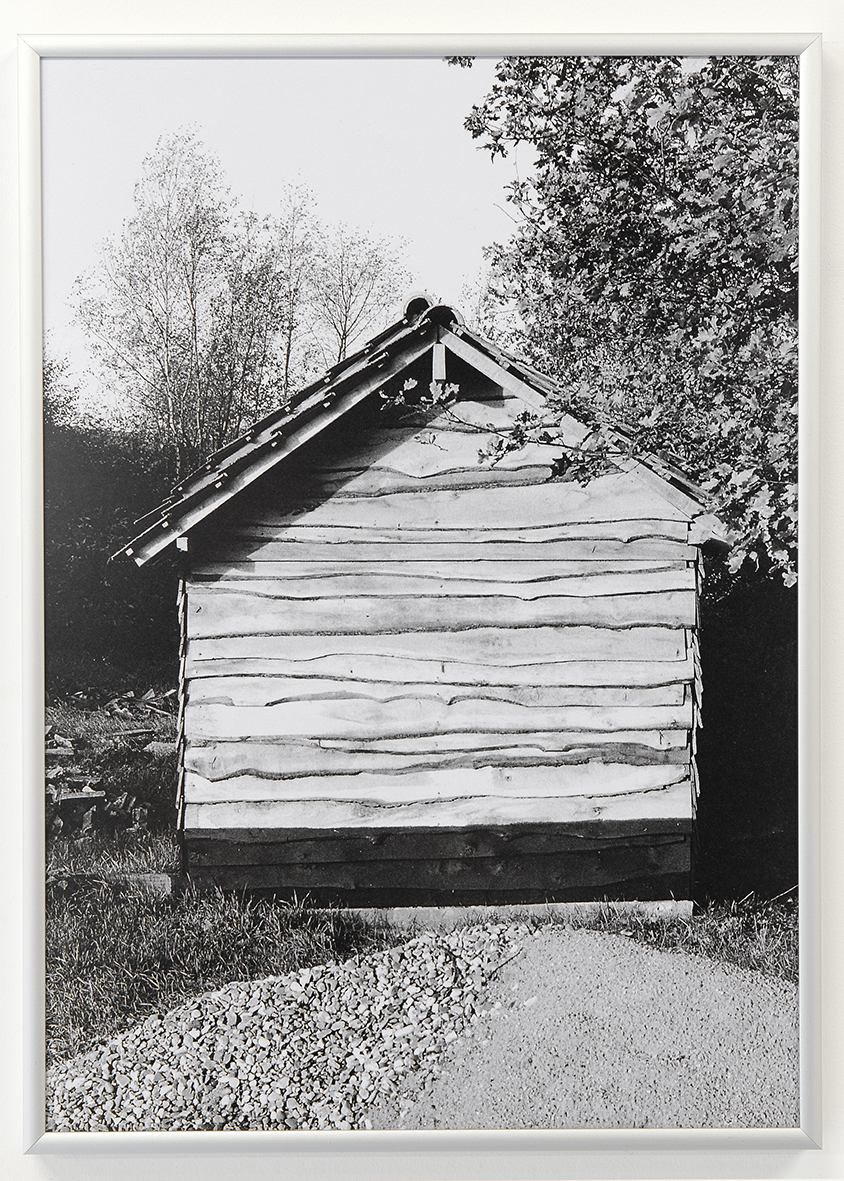
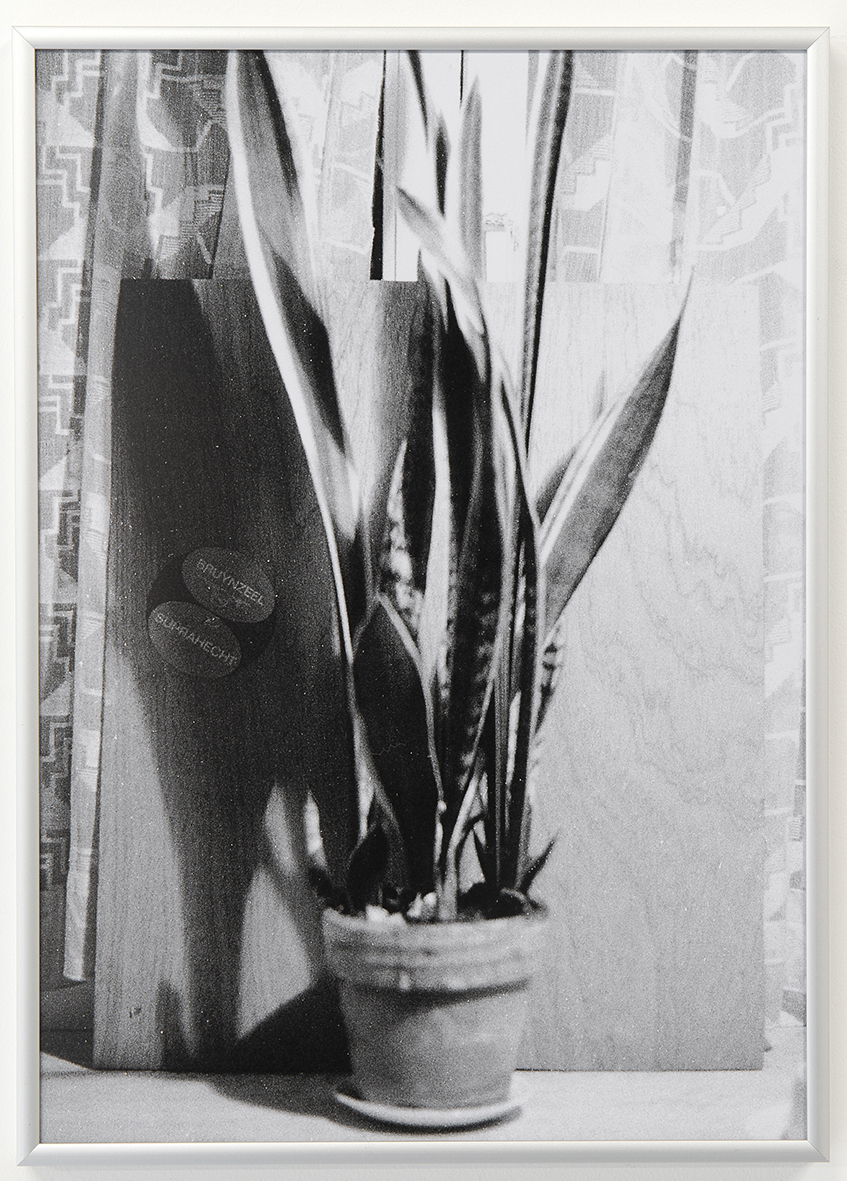
Jef Geys, Chalet, 1977-2015. 13 framed b&w prints (photographs 1977, prints 2015) © All rights reserved. Courtesy Air de Paris, Romainville.